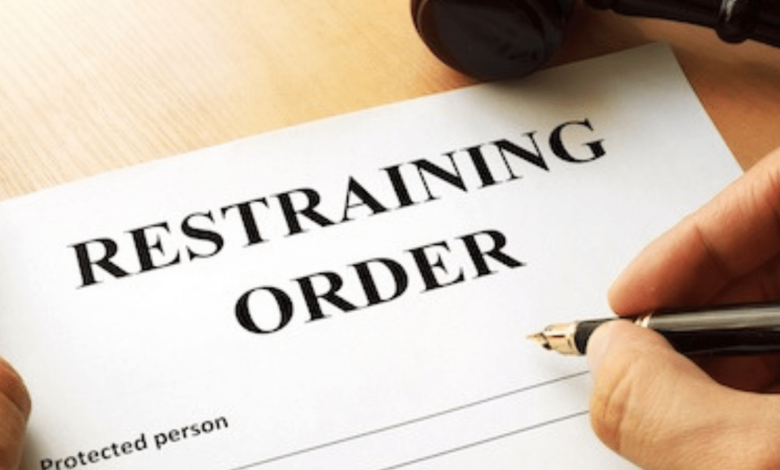Key Factors to Consider When Seeking to Remove a Restraining Order in Texas

Understanding Restraining Orders
Restraining orders, also known as protective orders, are legal instruments designed to prevent one individual from coming into contact with another. In Texas, these orders can be issued for various reasons, often involving cases of harassment, stalking, or domestic violence. Understanding the different types of restraining orders and their implications is the first step to navigating their removal. Understanding how to remove a restraining order in Texas is crucial.
The Texas Family Code outlines specific protocols for requesting and enforcing restraining orders. These orders may include Temporary Ex Parte Protective Orders, Temporary Protective Orders, and Final Protective Orders. Temporary Ex Parte Orders can be issued without the defendant being present, ensuring immediate protection for the petitioner. Temporary Protective Orders typically last up to 20 days and can be extended if necessary. Final Protective Orders involve a court hearing where both parties present their case. It can last up to two years or more, based on the severity of the situation. These nuances are critical to understanding as they dictate the relationship between the involved parties and the legal system.
Valid Reasons for Removal
Several factors might justify the removal of a restraining order. A change in circumstances is a common reason; for instance, if the situation that necessitated the order has significantly changed. For example, if the petitioner and respondent have reconciled or evidence shows that the allegations were unfounded, these would be valid grounds for requesting the removal. Another valid reason can be evidence proving that the order was based on misunderstandings or incorrect information. Being able to show that the original reasons for the order no longer exist or that they were incorrect strengthens the case for removal.
It’s crucial to present a compelling case with verified reasons and evidence to back it up. Judges are typically cautious about modifying or lifting restraining orders to ensure the safety of all parties involved. This includes presenting solid character evidence, witness testimonials, and substantiated claims that the circumstances have changed.
Legal Requirements and Procedures
The process of removing a restraining order involves several legal steps. Typically, this requires filing a motion with the court that issued the order and attending a hearing. Understanding Texas’ specific legal requirements can help streamline the process. This begins with drafting a detailed motion that includes all pertinent details and changes in circumstances since the order was issued.
Usually, the person requesting the removal must submit a detailed affidavit explaining why the order should be lifted. This affidavit should include any changes in circumstances and relevant evidence. It must be filed with the same court initially issuing the restraining order. The complexity of legal jargon and procedural steps means that thorough preparation is required to avoid any procedural errors that could result in the dismissal of the motion.
Consulting with an Attorney
Legal proceedings can be complicated. Therefore, it’s best to have an expert lawyer assist you. An attorney specializing in family law or protective orders can provide valuable advice and representation, helping you navigate the system’s nuances. They can also help draft the affidavit and present a solid case on your behalf. An attorney’s expertise can be particularly beneficial in understanding procedural nuances and ensuring all legal protocols are followed.
Attorneys can ensure that all procedural requirements are met and that your rights are adequately represented during the court proceedings. Their experience in similar cases enhances the likelihood of a successful motion by effectively countering the opposing party’s arguments and presenting solid evidence to the judges.
Gathering Evidence
Supporting your case with ample evidence is crucial. Relevant documents, witness statements, and other evidence that counter the need for the restraining order should be compiled meticulously. Strengthening your case with solid evidence can significantly influence the court’s decision. This evidence might include communication records, which can demonstrate a change in relationship dynamics or misunderstandings that have been resolved.
Evidence could include communication records, social media posts, witness testimonies, and any other documentation supporting your claim of changed circumstances or reconciliation. Collecting this evidence requires attention to detail and may also involve subpoenaing documents to ensure all relevant information is included. This evidence’s organized and persuasive presentation influences the court’s judgment.
The Court Hearing
During the hearing, both parties will have the opportunity to present their arguments. Here, your attorney will play a critical role, articulating your reasons for the order’s removal and presenting your compiled evidence professionally. This involves a clear and concise presentation of facts, character references, and any documentation proving that the reasons for the restraining order are no longer valid.
Preparation is key. Ensure you have all your documents organized and ready to present. Being familiar with your evidence and the reasons stated in your affidavit can help you respond confidently to any questions from the judge. Maintaining composure and respect during the hearing is also essential, as mannerisms can influence the court’s perception of your case.
Follow Up After the Hearing
After the hearing, it is essential to adhere to the court’s directives. This might involve providing additional documentation or taking specific actions as directed by the judge. Keeping up with these requirements demonstrates compliance and can influence the court’s decision. Follow-ups include communicating with your attorney to address any further legal requirements promptly.
Follow up as required to avoid the dismissal of your motion or other legal complications. Prompt and thorough compliance with court directives helps in the immediate case and establishes a record of cooperation and responsibility.
Potential Outcomes
The outcomes of a motion to remove a restraining order can vary. The court might remove the order, modify its terms, or deny the request altogether. Understanding these potential outcomes is essential to setting realistic expectations and preparing for the next steps, whatever they may be. Complete removal is ideal, but modifying the terms can provide relief and signify progress.
You can explore the possibility of filing an appeal if your motion is denied. Consulting with your attorney on potential next steps and alternative strategies can provide a path forward, even if the initial request is not granted. Appeals usually require additional evidence or a demonstration that the initial hearing had procedural errors or overlooked critical facts.
You May Also Read: Unlocking Success with Errajy Ltd Marketing Strategies




